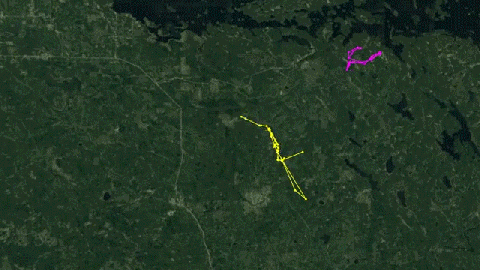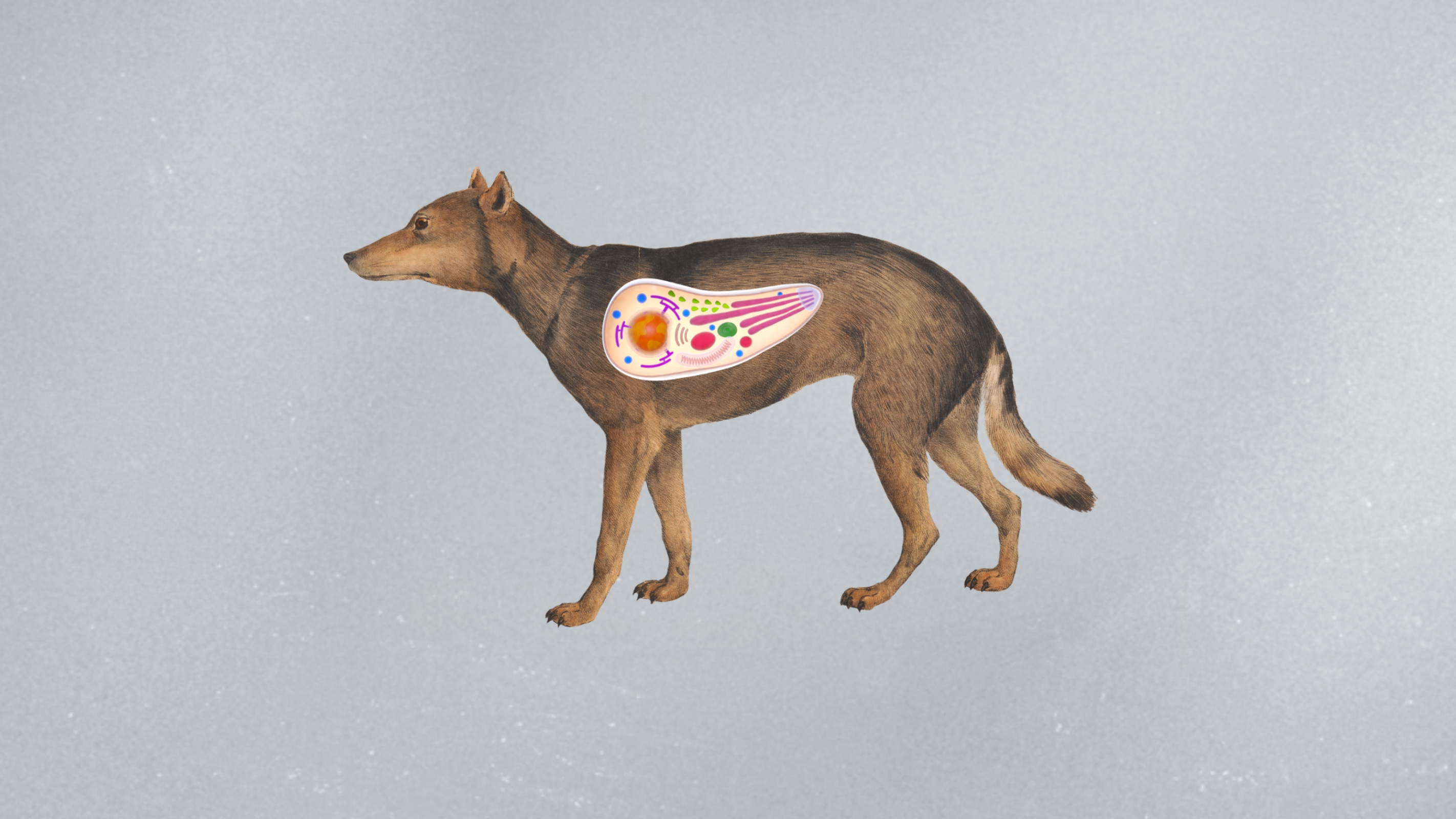GPS data shows how wolf packs carve out territory

- The Voyageurs Wolf Project has been tracking wolf packs in Northern Minnesota since 2015.
- The team uses GPS collars to track the movements of different packs, which hardly ever cross into one another’s territories.
- Recently, the Voyageurs Wolf Project also captured what’s likely to be the first-ever video of a wolf freshwater fishing.
A team of researchers at Voyageurs National Park in Northern Minnesota has spent years tracking the movements of a handful of wolf packs, collecting valuable data on wolves’ predation and inter-pack habits. Last summer, seven wolves of different packs were monitored by GPS collars that recorded their location data every 20 minutes, which amounted to 72 locations per day.
“This detailed GPS-data is incredibly valuable for understanding pack boundaries and also for our predation research,” read a post from the Voyageurs Wolf Project. “We visited every spot these wolves spent more than 20 minutes to determine if the wolves made a kill. This required an estimated 5,000 miles of hiking this past summer from our field crew!!”
In December, the Voyageurs Wolf Project released a static map showing the movements of the wolves over the course of the season.
The group recently decided to release the same map, but in an animated time-lapse form that shows how the wolves carve out their own distinct swaths of territory.
Each wolf pack comprises about five wolves, and each pack’s territory in the park covers approximately 60 square miles, the team wrote on Facebook. Wolves are highly territorial, and packs don’t usually cross into another pack’s territory. When they do, fights can occur between the packs’ alpha males, and sometimes the larger males. It’s common for these fights to end in death.
One person asked about the relatively erratic movements of the “white” wolf.
“The ‘white’ wolf was a yearling meaning that it was probably exploring the area outside of its territory because it probably will disperse here shortly,” the team wrote on Facebook. “It is common for wolves to make movements like this before they actually disperse. Wolf biologists call these movement ‘extra-territorial forays’ and it is a way for the wolf to gather information on the great beyond!”
In addition to the movement map, the Voyageurs Wolf Project also recently captured what’s likely the first video evidence of a wolf in the process of freshwater fishing.
“While wolves are known to hunt spawning salmon in marine coasts, this is one of the only observations of wolves hunting freshwater fish in creek and stream networks of boreal ecosystems like Voyageurs,” the the team wrote on Facebook.
Interestingly, the wolf doesn’t eat the fish right away, but rather stores it on the bank of the creek.
“It somehow knew that there were going to be more, so, it might as well go get fish while the fishing was good, and then come back later to the fish after he had gotten what he could,” Tom Gable, a researcher at the University of Minnesota researcher, told MPR News.





